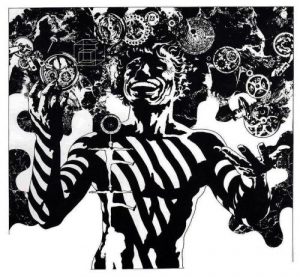As we discussed in class, Harlequin is a rebel who symbolizes disruption and threatens order and societal expectations. While the middle-class considers him “vulgar” and “shameful,” the lower classes view him as a “Robin Hood…a Jesus” (369). Considered dangerous by the upper echelons of society, Harlequin is a threatening presence because of his unpredictability and unwillingness to abide by the rules of a society governed by adherence to time.

One of the things that I loved about Ellison’s short story is that Harlequin’s inability and lack of desire to follow rules is represented in the way in which Ellison writes his character. When Ellison references the Ticktockman, the length of his sentences range from normal, for lack of a better word, to short and clipped. On the other hand, when Harlequin has his inner monologue about jelly beans, one continuous sentence stretches for ten lines. While we mentioned in class that these inner long monologues are representative of Harlequin’s movement and activity throughout the story, I think that they also serve as a textual representation of Harlequin’s disruptive nature; not only does he rebel against the Ticktockman and the society in which he lives, but also against expected norms of syntactical and grammatical structure.

Excellent observation!